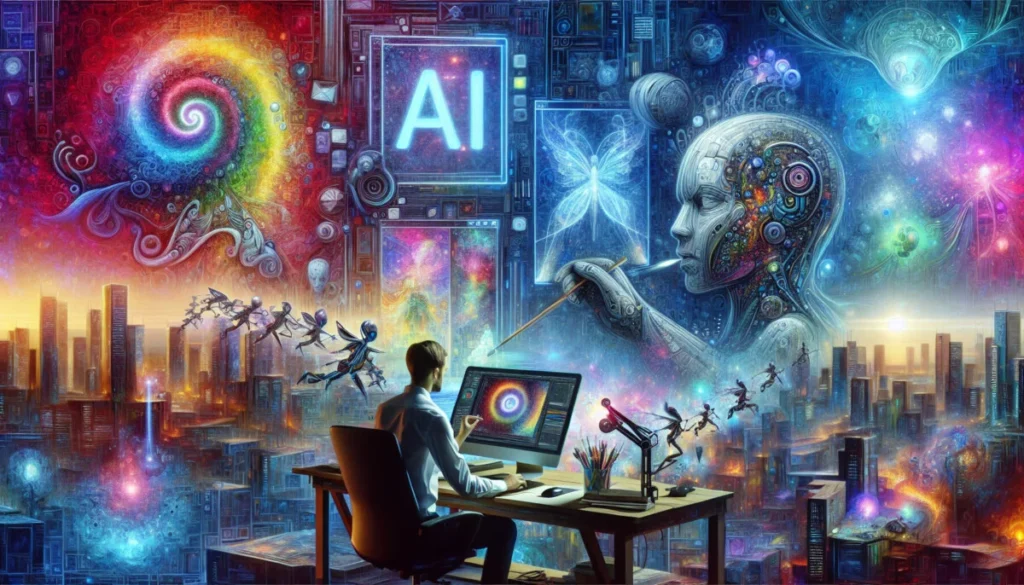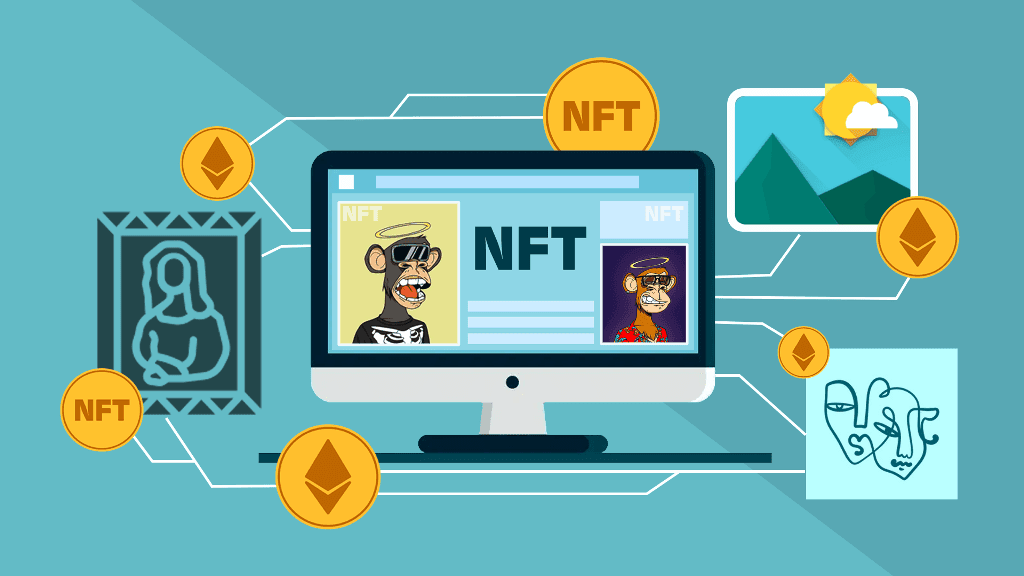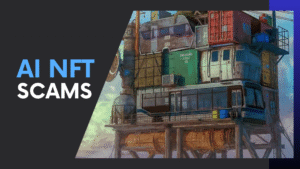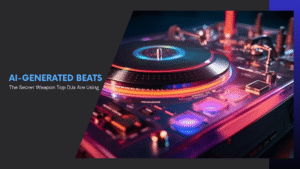The intersection of artificial intelligence (AI) and blockchain technology has unlocked unprecedented opportunities for digital creators. In particular, AI-generated NFT art is rapidly transforming the art and tech industries, providing creators with tools to produce stunning, innovative works of art. This emerging trend enables individuals with little to no traditional artistic training to break into the lucrative world of non-fungible tokens (NFTs) and, in some cases, become millionaires.
In this article, we explore how AI tools for NFT creators are revolutionizing the digital art landscape, the steps involved in creating and selling NFTs using AI, and real-world success stories of creators who have leveraged this technology to achieve remarkable financial success.
What Is AI-Generated NFT Art?
AI-generated NFT art refers to digital artwork created using artificial intelligence tools and technologies, which is then minted as an NFT on a blockchain. NFTs are unique digital assets stored on blockchain networks, and they serve as proof of ownership and authenticity for digital creations.
AI-powered platforms and tools, such as DeepArt, RunwayML, and Artbreeder, allow creators to experiment with styles, textures, and visual elements that were previously unimaginable. These tools use algorithms like generative adversarial networks (GANs) to create visually appealing and complex artwork from minimal input, democratizing art creation.

The Role of AI Tools in NFT Creation
1. Accessibility for Non-Traditional Artists
AI tools eliminate the need for years of artistic training. With platforms like DALL-E, RunwayML, and Artbreeder, creators can generate high-quality artwork by simply inputting text prompts or adjusting pre-defined parameters. This accessibility empowers anyone with a creative vision to produce artwork suitable for the NFT market.
2. Customization and Personalization
AI tools for NFT creators enable users to customize every aspect of their creations. For example, platforms like GANPaint Studio allow artists to manipulate elements such as lighting, texture, and composition, resulting in one-of-a-kind pieces. These personalized touches increase the perceived value of the artwork, making it more appealing to collectors.
3. Enhanced Productivity and Innovation
Traditional art creation can be time-consuming, but AI tools accelerate the process. Artists can generate multiple variations of a single idea, explore unique styles, and experiment with abstract concepts in a fraction of the time. This speed fosters innovation, as creators can quickly iterate and refine their work to align with market trends.
How to Create NFT Art with AI
Creating and selling AI-generated NFTs involves several steps:
Step 1: Select an AI Tool
Start by choosing an AI platform tailored to your artistic vision. Popular tools include:
- RunwayML: An innovative AI tool that excels in generating surreal and abstract art, making it an ideal choice for artists looking to push the boundaries of their creativity.
- DALL-E: Known for its ability to create detailed images from textual descriptions, DALL-E excels in generating specific and intricate visuals but may not focus as heavily on abstract styles.
- Artbreeder: This tool emphasizes portrait and character design by allowing users to blend images and create variations, fostering unique art pieces through collaborative creation.
- DeepDream Generator: Perfect for creating psychedelic and dreamlike visuals, DeepDream uses convolutional neural networks (CNN) to produce vivid and abstract images that resemble dreamscapes.
Step 2: Generate Artwork
Use the selected tool to create your artwork. Experiment with:
- Text prompts (e.g., “A futuristic cityscape at sunset”)
- Style adjustments (e.g., impressionism, surrealism, minimalism)
- Color schemes and compositions
Step 3: Mint Your NFT
“Minting” an NFT involves uploading your digital art to an NFT marketplace and registering it on a blockchain. Popular platforms include:
- OpenSea
- Rarible
- Foundation
- SuperRare
During this process, you’ll:
- Create a crypto wallet (e.g., MetaMask).
- Choose a blockchain (e.g., Ethereum, Polygon, Solana).
- Pay a minting fee (commonly referred to as “gas fees”).
- Add metadata, such as title, description, and rarity traits.
Step 4: Promote Your NFT
Promotion is crucial for selling AI-generated NFTs. Use social media platforms like Twitter, Instagram, and Discord to build a community of collectors. Engage with NFT influencers and showcase your work in virtual galleries to increase visibility.
Step 5: Sell Your NFT
Set a price for your artwork or list it for auction. Many NFT marketplaces allow buyers to place bids, providing an opportunity to maximize profits.
Learn How to Create NFT with AI in Under 30 Minutes: A Beginner’s Guide in more details

Case Studies: From Ordinary Creators to Millionaires
1. Mike Winkelmann (Beeple)
While Beeple is not an “ordinary creator,” his groundbreaking success demonstrates the potential of digital art in the NFT space. In March 2021, Beeple sold his NFT artwork “Everydays: The First 5000 Days” for $69.3 million at Christie’s auction. His success inspired countless creators to explore the possibilities of AI-generated NFT art.
2. Claire Silver
Claire Silver is a self-taught AI artist who uses tools like Artbreeder to create stunning, dreamlike visuals. She has sold numerous NFTs for thousands of dollars each and is a vocal advocate for AI-assisted art. Her work proves that combining creativity with AI can yield extraordinary results.
3. Refik Anadol
Refik Anadol, a media artist, uses AI and data-driven techniques to create immersive digital installations. His NFT collections have fetched millions, showcasing the financial potential of AI-driven creativity.
4. Trevor Jones
Trevor Jones, a traditional artist who embraced AI and NFTs, has become one of the top-selling creators in the NFT space. By combining AI-generated visuals with hand-painted elements, he has sold works like “Bitcoin Angel” for over $3 million, demonstrating how blending traditional and AI techniques can captivate collectors.
5. Mad Dog Jones
Mad Dog Jones, a Canadian digital artist, has achieved significant success by leveraging AI tools to enhance his cyberpunk-inspired creations. His NFT series “Replicator” earned over $4 million, illustrating the lucrative potential of combining futuristic aesthetics with blockchain technology.
Why AI-Generated NFT Art Is So Valuable
1. Scarcity and Uniqueness
NFTs are inherently scarce due to their unique identifiers on the blockchain. When combined with the one-of-a-kind nature of AI-generated art, they become highly sought after by collectors.
2. Emotional and Intellectual Appeal
AI-generated artwork often explores abstract and futuristic themes, appealing to audiences who value innovation and creativity. The blend of human input and machine output creates a compelling narrative that resonates with buyers.
3. Market Demand for Digital Art
As digital spaces like the metaverse gain traction, the demand for digital assets—including NFTs—continues to grow. AI-generated art fits seamlessly into these environments, driving up its value.
4. Technical Intricacy
AI-generated artwork often features intricate details and patterns that are difficult to replicate manually. This technical sophistication adds to the artwork’s allure, as collectors appreciate the complexity behind the creation process.
5. Collaboration Between Humans and Machines
The collaborative nature of AI art—where humans guide AI algorithms to produce the final piece—adds a layer of depth and meaning. Buyers see value in this synergy, as it represents a fusion of technology and human creativity.
6. Historical Significance
AI-generated NFT art represents a groundbreaking moment in art history. Early adopters and collectors view these works as milestones, investing in them as symbols of technological progress and cultural evolution.
7. Customizability and Personalization
Many AI tools allow for a high degree of customization, enabling creators to produce personalized works tailored to specific audiences or themes. This ability to cater to niche markets enhances the desirability and value of the artwork.
Also Read About: The Rise of AI in NFT Art: Why It’s the Perfect Time to Start Creating

Tips for Success in Selling AI-Generated NFTs
- Stay Updated on Trends: Monitor NFT marketplaces and social media platforms to identify popular styles and themes.
- Build a Brand: Develop a consistent style and story around your artwork to attract a loyal audience.
- Engage with the Community: Join NFT-focused forums, Discord groups, and Twitter Spaces to network with other creators and collectors.
- Experiment with Pricing: Start with affordable pricing to build a following, then gradually increase as demand grows.
- Collaborate with Influencers: Partnering with established NFT artists or influencers can boost your visibility and credibility.
The Future of AI-Generated NFT Art
The combination of AI and blockchain technology is still in its infancy, and the possibilities are endless. As AI tools become more advanced, they will enable even greater levels of creativity and accessibility. Meanwhile, the growing adoption of NFTs in gaming, virtual reality, and social media will create new markets for digital art.
This convergence of technology is not just transforming the art world—it is democratizing it. By lowering the barriers to entry and amplifying creative potential, AI-generated NFT art is empowering ordinary creators to achieve extraordinary success.
Conclusion
AI-generated NFT art is more than a technological novelty; it is a paradigm shift in the way art is created, consumed, and valued. By leveraging AI tools for NFT creators, individuals from diverse backgrounds can produce and sell unique digital artwork, carving out a space for themselves in the lucrative NFT market.
From providing accessibility and customization to enabling creators to capitalize on emerging trends, AI is revolutionizing the digital art landscape. Whether you are an aspiring artist or an established creator, now is the time to explore how AI can transform your creative journey and unlock new financial opportunities. Who knows? You could be the next millionaire in the world of AI-generated NFT art.


